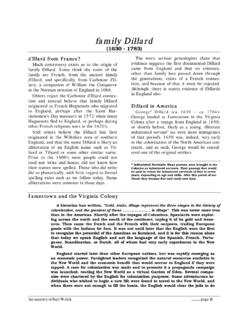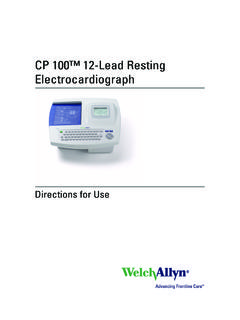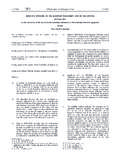Transcription of Food system strategies for preventing micronutrient ...
1 Food system strategies for preventing micronutrient malnutrition Dennis D. Miller and Ross M. welch ESA Working Paper No. 13-06. August 2013. Agricultural Development Economics Division Food and Agriculture Organization of the United Nations The designations employed and the presentation of material in this information product do not imply the expression of any opinion whatsoever on the part of the Food and Agriculture Organization of the United Nations (FAO) concerning the legal or development status of any country, territory, city or area or of its authorities, or concerning the delimitation of its frontiers or boundaries.
2 The mention of specific companies or products of manufacturers, whether or not these have been patented, does not imply that these have been endorsed or recommended by FAO in preference to others of a similar nature that are not mentioned. The views expressed in this information product are those of the author(s) and do not necessarily reflect the views or policies of FAO. FAO 2013. FAO encourages the use, reproduction and dissemination of material in this information product. Except where otherwise indicated, material may be copied, downloaded and printed for private study, research and teaching purposes, or for use in non-commercial products or services, provided that appropriate acknowledgement of FAO as the source and copyright holder is given and that FAO's endorsement of users' views, products or services is not implied in any way.
3 All requests for translation and adaptation rights, and for resale and other commercial use rights should be made via or addressed to FAO information products are available on the FAO website ( ) and can be purchased through ii Food system strategies for preventing micronutrient malnutrition Dennis D. Miller a and Ross M. Welcha Abstract Micronutrients are defined as substances in foods that are essential for human health and are required in small amounts. They include all of the known vitamins and essential trace minerals. micronutrient malnutrition affects a third to a half of the global population.
4 It causes untold human suffering and levies huge costs on society in terms of unrealized human potential and lost economic productivity. The goal of this paper is to identify deficiencies in the food system that lead to micronutrient malnutrition and explore and evaluate strategies for its prevention. We examine the impact of agricultural practices on micronutrients in the food supply, including cropping systems, soil fertility and animal agriculture. We then discuss the potential of biofortification increasing the concentration of micronutrients in staple food crops through conventional plant breeding or genetic engineering as a means to reduce micronutrient deficiency.
5 In addition, we discuss the impact of food losses and food waste on micronutrients in the food supply, and we explore successful strategies to preserve micronutrients from farm to plate, including food fortification. Our review of the literature sheds light on the advantages and limitations of alternative interventions to reduce micronutrient deficiencies along the supply chain. We end with recommendations for actions that will reduce the prevalence of micronutrient malnutrition. Key words: micronutrient malnutrition, dietary diversity, food processing, food waste, fortification, food systems, soil fertility, fertilization, animal agriculture, biofortification, nutrition education.
6 A Department of Food Science, Stocking Hall, Cornell University, Ithaca, NY, USA 14853. 1. Acknowledgements This paper was prepared as a background paper for the State of Food and Agriculture 2013 and the authors wish to acknowledge financial support from the Food and Agriculture Organization of the United Nations. Any views expressed or remaining errors are solely the responsibility of the authors. Comments and questions should be directed to: Dennis D. Miller Department of Food Science Stocking Hall Cornell University Ithaca, NY, USA 14853. Phone: 607-255-2895. Email: 2.
7 1. Introduction Micronutrients are substances in foods that are essential for human health and are required in small amounts. They include all of the known vitamins and essential trace minerals. micronutrient malnutrition develops when intakes of bioavailable micronutrients are too low to meet requirements. It affects to of the world population. The 3 most prevalent forms of micronutrient malnutrition are iron, iodine, and vitamin A deficiencies (Allen et al., 2006). Zinc and vitamin B-12 deficiencies are also widespread. Consequences of micronutrient malnutrition include increased mortality rates, especially in women and children; poor pregnancy outcomes; increased morbidity; impaired mental and physical development in children; and reduced work productivity in adults (Black et al.)
8 , 2008). Both the density and bioavailability of micronutrients in the diet are important for achieving optimal micronutrient status. Nutrient density is the amount of a nutrient in a food per calorie or unit weight. Bioavailability is the proportion of an ingested nutrient that is absorbed and utilized for some essential metabolic function. Food systems are linked to the nutritional wellbeing and heath of individuals and populations through the nutrients and other bioactive components contained in the foods they supply. Agriculture is the foundation of all food systems in that agricultural products are the primary source of most nutrients.
9 If agriculture cannot supply all the essential nutrients in amounts required for good health and productive lives, malnutrition develops. To date, the primary focus of agricultural research, policy, and practice has been on increasing yields with little attention paid to improving the nutrient output of farming systems. Increasing yields is important but the nutritional quality of crops produced must also be a priority if sustainable progress toward reducing the prevalence of malnutrition is to be realized. A basic tenet of a nutritionally adequate diet is the principle that it must contain a variety of foods from several different food groups.
10 Therefore, strategies for improving the nutritional status of populations should include efforts to increase dietary diversity. However, while agricultural production is a necessary component of an adequate food supply, it is not sufficient. A well-functioning food value chain is also necessary to deliver food to the consumer. The food processing sector is an important component of the food value chain. Food processing can reduce food waste, prevent nutrient losses, increase nutrient content through fortification, enhance the acceptability of foods to consumers, reduce risk of foodborne illness, provide jobs and economic development, and reduce the time and energy required for home food preparation.














